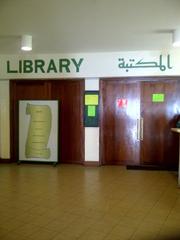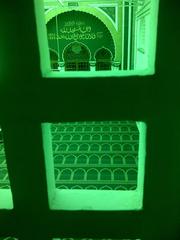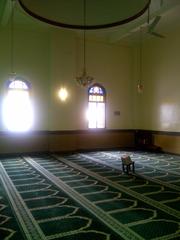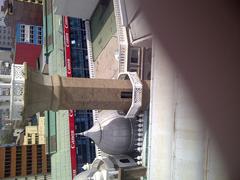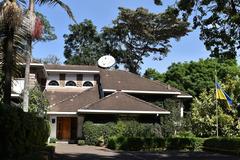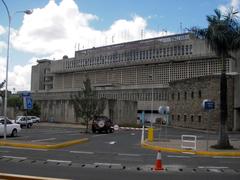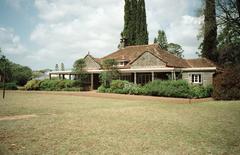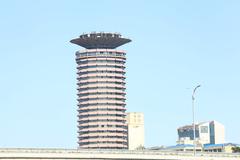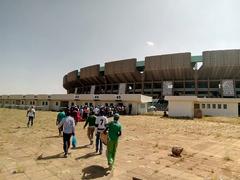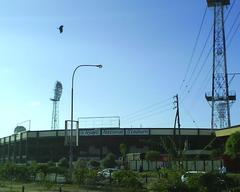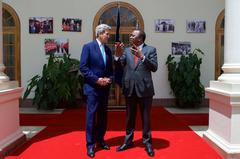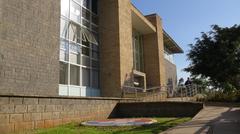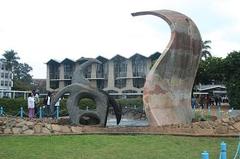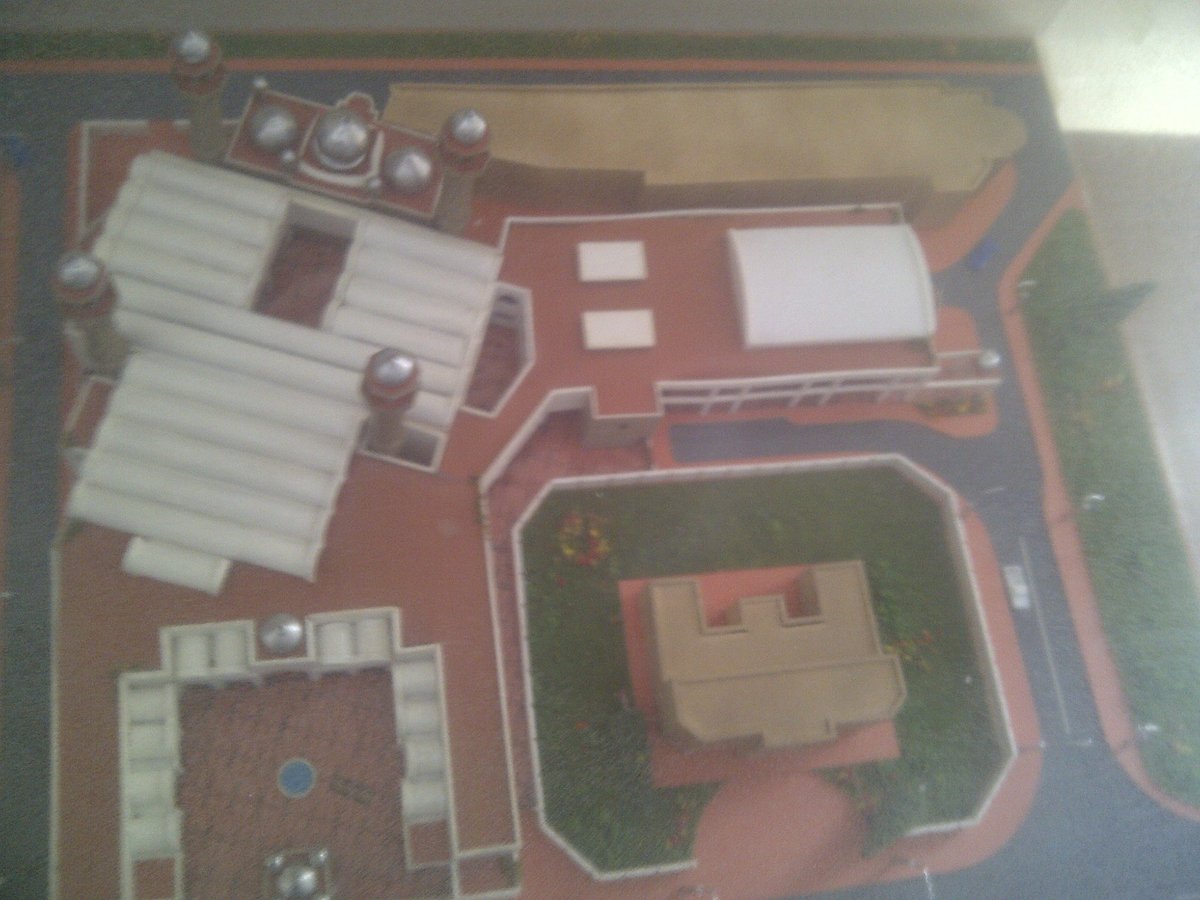
Visiting Hours, Tickets, and Tips for Jamia Mosque in Nairobi
Date: 18/07/2024
Introduction
The Jamia Mosque in Nairobi, Kenya, stands as one of the most prominent landmarks and symbols of Islamic heritage in East Africa. Established in the early 20th century, this mosque has grown from a modest structure to a grand architectural marvel that showcases a blend of Arabic and Swahili styles. Its history is deeply intertwined with the development of Nairobi’s Muslim community, making it a focal point for religious, cultural, and social activities. This comprehensive guide aims to provide visitors with a detailed understanding of the mosque’s rich history, architectural evolution, and its significant role within the community. Additionally, practical information regarding visiting hours, ticket prices, and nearby attractions will be covered to ensure a respectful and enriching experience for all visitors. Whether you’re a history enthusiast, a curious traveler, or someone seeking spiritual solace, Jamia Mosque offers an insightful journey into Nairobi’s cultural and religious landscape. For more detailed information, you can visit the official Jamia Mosque Nairobi website.
Table of Contents
- Introduction
- Early Beginnings
- Architectural Evolution
- Role in the Community
- Visitor Information
- Special Events and Tours
- Political and Social Significance
- Modern Developments
- Preservation of Heritage
- Challenges and Resilience
- Future Prospects
- FAQ
- Conclusion
Early Beginnings
The Jamia Mosque’s history dates back to the early 20th century, with its foundation laid in 1902. The initial construction was modest, reflecting the limited resources of the Muslim community at the time. The mosque was built to serve the spiritual needs of the growing Muslim population in Nairobi, which included traders, laborers, and settlers from various parts of the world, particularly from the Indian subcontinent and the Arabian Peninsula.
Architectural Evolution
The architectural evolution of Jamia Mosque is a testament to the community’s growth and prosperity. The original structure was expanded and renovated multiple times to accommodate the increasing number of worshippers. The most significant expansion occurred in the 1940s, under the leadership of Sheikh Abdullah Al-Farsy, a prominent Islamic scholar and leader. This period saw the mosque’s transformation into a grand structure with a blend of Arabic and Swahili architectural styles. The mosque’s design features intricate calligraphy, geometric patterns, and a large central dome, which have become its defining characteristics.
Role in the Community
Throughout its history, Jamia Mosque has played a pivotal role in the social and cultural life of Nairobi’s Muslim community. It has served not only as a place of worship but also as a center for education and social services. The mosque’s madrasa (Islamic school) has been instrumental in providing religious education to generations of Muslims in Nairobi. Additionally, the mosque has been involved in various charitable activities, including providing food and medical assistance to the needy.
Visitor Information
Visiting Hours
- Daily: 9 AM to 6 PM
Ticket Prices
- Entry: Free (donations welcome)
Travel Tips
- Dress Code: Modest attire is required. Women should cover their heads.
- Shoes: Must be removed before entering the prayer hall.
Nearby Attractions
- Nairobi National Museum
- Kenyatta International Conference Centre
- Uhuru Park
Accessibility
- Facilities: Ramps and wide doorways for visitors with disabilities.
Special Events and Tours
Jamia Mosque hosts various special events and guided tours throughout the year. Visitors can participate in Friday prayers, offering a unique cultural experience. Guided tours are available upon request, providing insights into the mosque’s history, architecture, and community role. For photography enthusiasts, the mosque’s intricate designs and stunning architecture offer numerous photographic spots.
Political and Social Significance
Jamia Mosque has been a focal point for political and social movements within the Muslim community. During the colonial period, the mosque served as a hub for anti-colonial activism and a meeting place for leaders advocating for the rights of Muslims and other marginalized communities. In the post-independence era, the mosque continues to be a platform for addressing social and political issues affecting the Muslim population in Kenya.
Modern Developments
In recent years, Jamia Mosque has undergone further renovations and expansions to meet the needs of the contemporary Muslim community. The mosque now includes modern facilities such as a library, conference rooms, and a media center. These additions have enhanced the mosque’s role as a center for learning and community engagement. The mosque’s administration has also embraced digital technology, establishing a website and social media presence to reach a broader audience (Jamia Mosque Nairobi).
Preservation of Heritage
Efforts have been made to preserve the historical and architectural heritage of Jamia Mosque. Recognized as a cultural landmark in Nairobi, there are ongoing initiatives to document its history and promote its significance to both the Muslim community and the wider public. These efforts include the publication of books and articles, as well as the organization of exhibitions and cultural events.
Challenges and Resilience
Despite its historical significance, Jamia Mosque has faced various challenges over the years. These include issues related to funding for maintenance and expansion, as well as social and political tensions affecting the Muslim community in Kenya. However, the resilience of the community and the leadership of the mosque have ensured its continued relevance and importance. The mosque remains a symbol of unity and faith for Muslims in Nairobi and beyond.
Future Prospects
Looking ahead, Jamia Mosque is poised to continue its legacy as a center of Islamic faith and culture in Nairobi. Plans for further development include expanding educational programs, increasing engagement with the youth, and promoting interfaith dialogue. The mosque’s administration is committed to preserving its historical heritage while adapting to the changing needs of the community.
FAQ
Q: What are the visiting hours for Jamia Mosque? A: The mosque is open daily from 9 AM to 6 PM.
Q: Are there any entry fees or tickets required to visit Jamia Mosque? A: Entry is free, but donations are welcome.
Q: What are some nearby attractions to Jamia Mosque? A: Nearby attractions include Nairobi National Museum, Kenyatta International Conference Centre, and Uhuru Park.
Q: Is Jamia Mosque accessible for visitors with disabilities? A: Yes, the mosque has ramps and wide doorways to accommodate visitors with disabilities.
Conclusion
In conclusion, Jamia Mosque is not just a place of worship but a cornerstone of Nairobi’s Muslim community, reflecting a rich tapestry of faith, culture, and history. From its early beginnings in 1902 to its current status as a prominent landmark, the mosque has continually evolved to meet the needs of its community. It remains a hub for religious education, social services, and cultural activities, while also serving as a platform for political and social advocacy. Visitors are encouraged to explore this iconic mosque to gain a deeper understanding of its historical and cultural significance. With well-preserved architectural features, active community engagement, and modern developments, Jamia Mosque continues to be a beacon of unity and faith in Nairobi. For those planning a visit, ensure to respect the dress code and etiquette, and take the time to explore nearby attractions to fully appreciate the vibrant atmosphere of Nairobi’s city center. For more updates and information, consider following the mosque on their official website and social media platforms.
References
- Explore the Rich History and Visiting Information of Jamia Mosque in Nairobi, 2024 https://www.jamiamosque.co.ke
- Visiting Jamia Mosque - History, Significance, and Visitor Information in Nairobi, 2024 https://www.jamiamosque.co.ke
- Visiting Jamia Mosque, Nairobi - Hours, Tickets, and Tips, 2024 https://www.jamiamosque.co.ke


